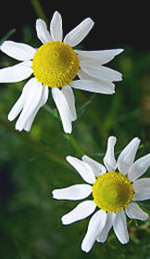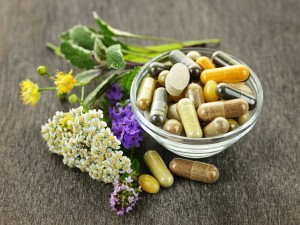 Introduction
Introduction
The title may seem like a bold statement, but there is now what I could safely call a “mountain” of evidence in relation to the uncanny ability of essential oils to have very tangible effects on our brain. That means essential oils are quite “psychoactive,” and actually have the power to affect our mood, to lift our spirits, to help us to relax, sleep, or study, just to name a few. My interest in oils began over two decades ago when I was introduced to Essential Oils during my formal and self-directed training as a Buddhist practitioner.
My passion has only grown since then. I was initially looking for ways of enhancing my mind’s ability to enter meditative states. I was also learning massage therapy techniques and wanted to create my own massage oils blends. This led to deep research on essential oils and then a newfound love of herbs in general. Let’s dig in to the alleged scientific evidence:
The Scientific Proof
Many years ago, I got my hands on a non-medical version of an “EEG”. This is short for electroencephalogram, which is a device that connects to our body to measure our brain waves. Our brain emits electrical waves that can be measured and quantified with great accuracy. The patterns of waves have been broken into four main states:
- Delta Waves / 1Hz – 3Hz / Deep Sleep
- Theta Waves / 4Hz – 7Hz / Creating/Thinking
- Alpha Waves / 8Hz – 13Hz / Relaxing
- Beta Waves / 14Hz – 30Hz / Alertness
Numerous studies have now been conducted with the goal of measuring the stimulant and sedative effects of essential oils on our brain state. Without even having to see images of the parts of our brain that get stimulated by aromas, we can get an immense amount of valuable information from simply measuring the change in our brain waves as we’re exposed to various essential oils.
What researcher have found is nothing short of astounding. Our states of consciousness, such as sleep, alertness, fatigue, stress, anxiety, creativity, and so on; these can be accurately determined by simply reading the EEG.
If this sounds too simple to be true, read on!
Before the addition of essential oils or other aromas, there are a number of states that are standard, test after test, when it comes to our brains:
- Alpha states give way to a more alert beta state the moment we open our eyes.
- Alpha states gives way to beta states when we require cognitive functioning (like problem solving).
- Beta waves are related to arousal, stimulation, alertness.
- Theta waves occur during creativity and problem solving, but are mostly associated with sedation and light sleep.
- Delta waves only occur during deep sleep.
- Spontaneous EEG patterns correspond predictably with Central Nervous System changes.
- That means EEG can accurately measure different states – deep sleep, meditation, alertness and so on.
Let me explain just a bit more to give us some solid context at how powerful EEG can be to measure states of mind: In a situation that requires intense thinking (such as figuring out our taxes), that state of arousal will have a corresponding change in EEG (Oken 2006). Increases in in theta and a decrease in beta waves can be easily measured. Conversely, if someone is getting tired from doing all their taxes, their brainwaves will begin to slow, and all of the beta waves will give way to alpha, then theta, and then to delta.
It works every time!
Now, I have to admit that I am oversimplifying things here. There can be a number of reasons why changes in EEG may occur when test subjects are given various smells. If they’re really focused on analyzing the scent, if the scent triggered a memory, or if the test subject found the scent unpleasant; these all have direct effects on EEG’s as well. Since the point of this article isn’t to validate EEG as an effective means to measure tangible effects of essential oils, suffice it to say that researchers have overcome these potential caveats.
There is some discrepancy on the “placebo effect”, where in several studies, those who expected a stimulating or relaxing effect from their essential oil actually experienced that effect. Do we discount an effect only because we think it into effectiveness?
What this means is this: Say we have an essential oil blend made for relaxation, such as Lavender, Vanilla, and Sandalwood (one of the authors favorite combinations, with a touch of musk). If we simply think it’s a relaxing blend and inhale the aroma — in more than a few studies, the EEG’s will show increased activity in the relaxation centers — physically relaxing the subject!
Some Specific Examples
In a study by Diego in 1998 and Field in 2005, it was conclusively shown that Lavender “increased beta wave power, elevated feelings of relaxation, reduced feelings of depression, and improved both speed and accuracy in cognitive tasks.” When they presented their test subjects with Rosemary Essential Oil, it “decreased frontal alpha and beta power, decreased feelings of anxiety, increased feelings of relaxation and alertness, and increased speed in math computations.”
Wow. Those are quite bold statements for a scent!
What that also translated into, is that the group exposed to the lavender scent had a measurable increase in sedation, while the rosemary group had an increased level of alertness. Both, though, decreased levels of anxiety, and both helped increase the ability to solve problems that involved critical thinking.
Again, this doesn’t necessarily mean that either of these oils directly helps to increase performance; there are more than a few studies that point to the contrary. In the researchers own words, this is how they describe their findings:
…pleasant odors enhance task performance by decreasing subjective feelings of stress, that is, by reducing over-arousal, while unpleasant fragrances increase activation from suboptimal to optimal levels, thus having the same beneficial effects on cognitive performance.
In another interesting study in 2005 by Sakamoto, lavender essential oil and jasmine essential oil were used (as well as no scent as a control) continuously over the course of the test. Over five sessions, all in a row with brief resting periods between, test subjects had to take a series of tests that required them tracking a moving target. As the sessions went on, fatigue increased, and arousal decreased for the control group. In the Lavender group; “tracking speed increased and tracking error decreased.”
They concluded that the lavender aroma may have been responsible for decreasing the arousal level during the resting periods, therefore not specifically increasing performance directly, but helping the person to perform better by keeping them more relaxed as they were performing their tasks. Translated into plain English, this means that if Lavender aroma is presented to people during breaks or lunchtime, that it has been shown that the Lavender can prevent the deterioration of work performance.
Think about this in terms of personal use: If you’re studying for a test, one thing you can do it take regular breaks from your studying, stopping to inhale Lavender Oil set in a vaporizer within your break room, or simply by inhaling directly from a bottle of essential oil. You may find that you are better equipped to study and recall your studies than you were without the breaks and the Lavender Oil. And this is just one imagining of an infinite number of uses I can think of for Lavender Essential oil; I would love to hear what uses you’ve found in your comments below!
Learning and Memory
Basic cognitive functions and the effects that essential oils may have on them have been studied extensively in recent years. What has occurred less, is tests for an increase (or decrease) in an overall ability to learn or increased memory. This is something that interests me greatly as I lost my grandmother to Alzheimer’s a few years ago, and all of my herbal blends, although helpful (such as my Cognihance Capsules), could not stop the march into oblivion that I watched her take day by day.
What about essential oils?
Let’s take a brief look at memory to explain: Memory occurs in three stages. First, we’ve got short term memory. This is sort of our RAM, like the RAM on the computer. It handles tasks in the moment, but can’t do anything with that information other than manipulate it in the present moment, and when we send tasks to the background. The next stage is called “working memory” which transitorily saves memories in waiting room of sorts. It’s here where our brains decide what will happen with those memories; will we forget them, or commit them to long-term memory. Long term memory, by the way, is stage three.
Now that we’re memory experts, let’s take a look at essential oils in relation to memory.
Curiously enough, in several studies conducted on school children, they found an increase in memory functions only in children who exhibited high anxiety levels. In other studies, the results were varied, but relatively consistent. Let me summarize some of the more interesting results for you here:
- Lavender – reduced the quality of memory, but significantly relaxed subjects
- Rosemary – increases memory accuracy, reduces calculation speed, increases alertness
- Peppermint – enhanced memory quality, and increased alertness
- Ylang Ylang – impairs memory quality, reduces processing speed, but increases calmness
- Spanish Sage – increases memory speed & quality, alertness, feelings of contentment and calm
I know these are just a few examples, and I’m sure what you would like more than anything right here, is a handy guide of every scientific study and the results from those tests in relation to each individual essential oil in existence. Unfortunately, I don’t have that just yet, but the descriptions on the store side of EOX are definitely getting those one by one.
Essential Oil Encoding
This is the part I find most fascinating when it comes to essential oils and scents in general. It’s the idea of encoding. And what is astonishing to me, is that we can encode scents into our memories, that can trigger different emotions and states of consciousness, depending on what was going on at the time of that memory encoding.
For example, infants who were being soothed were also exposed to a scent at the same time (Lavender oil) that was thought to be calming. When that same scent was introduced at a later time, but without the accompanying soothing from the parent, levels of anxiety were reduced, and overall calmness increased!
Wow, again.
Even more interesting, is that scents that have been encoded into our systems can have effects on us even when we’re not conscious. In a study by Diekelmann in 2012, found that memory consolidation is accelerated during sleep when presented with specific scents. In a similar study by Hauner in 2013, scents presented during sleep acted as triggers when awake.
Think of the possibilities these findings have for our ability to learn, as well as our overall state of well being. My imagination tends to run away with me with these kinds of revelations, and here are a few scenarios I have since informally tested with both myself and friends, using my personal EEG-type device (i.e. non-medical version):
- I took a 5ml bottle of my Stressless Blend without doing any relaxation techniques (such as breathing exercises), and measured my typical baseline when in a calm state over the course of a week. (I find that I am often in a 9Hz Alpha state, even with my eyes open, with some additional Theta activity.) This was a good baseline to start from.
- Then, for a month, while performing breathing exercises, I subjected myself to my Stressless Blend again. The idea was to see if I could encode the association of my Stressless Blend with exercises that actually physically calmed me, to see if I could take away the breathing exercises, but still get the calming effects from the aroma.
I waited only a day, tested myself for a week, waited two months, and then re-tested myself. What I did was to present the aroma to myself when my anxiety levels were higher than usual. This is when I might close my eyes, find a quiet corner, and do some breathing exercises. (Yes, this required me to have my Stressless Blend with me wherever I went, but I carry it with me everywhere anyway!) I cracked open my 5 ml bottle, and simply breathed in the aroma. I did this for 5 minutes each time and would record the results. If I were at my lab, I would connect myself to my electrodes, then present myself with the Stressless Blend for 5 minutes and record the subjective results as well as the EEG results.
I was more than a little surprised at how signifiant the results were!
What I found was a far more significant result in both subjective and measured calmness levels after encoding myself with the Stressless Blend. Whoa. I was able to commit that scent to memory while doing breathing exercises, and not unlike Pavlov’s Dog, I was able to trigger those same physical characteristics of calmness as well as my subjective opinion of my calm state.
That result set my mind reeling, and from what I’ve read, there is really no limit to what we can actually encode ourselves with. So, not only do I create essential oil blends for EOX that have a solid scientific basis, our staff tests every single one of those blends both subjectively and by physically measuring our brain wave patterns and the effects that our essential oils have on them. This means every one of our blends were built, from the ground up, to have very tangible effects on the human body.
I’m extremely curious to know if anyone else has tried “encoding”, or what other have done in relation to personal experiments with essential oils and tangible effects on different cognitive functions and states of consciousness. “Psychoactive” is sometimes treated like a dirty word, but all of the scientific evidence presented above makes it vividly clear that scents can have very tangible, psychoactive effects on our bodies that can be easily measured, verified, and reproduced outside of the lab. Feel free to share yours below in the comments section.
Find our entire selection of Individual Essential Oils and our growing collection of EOX Blends in the store section of this website.
Namaste,
Keith
REFERENCES:
Diego, M.A., Jones, N.A., Field, T. et al. 1998. Aromatherapy positively affects mood, EEG patterns of alertness and math computations. International Journal of Neuroscience 96(3-4):217-224.
Field, T., Diego, M., Hernandez-Reif, M. et al. 2005. Lavender fragrance cleaning gel effects on relaxation. International Journal of Neuroscience 115(2):207-222.
Oken, B.S., Salinsky, M.C., and Elsas, S.M. 2006. Vigilence, alertness, and sustained attention: Physiological basis and measurement. Clinical Neurophysiology 117(9):1885-1901
Sakamoto, R., Minoura, K., Usuui, A., Ishizuka, Y., and Kanba, S. 2005. Effectiveness of aroma on work efficiency: Lavender aroma during recesses prevents deterioration of work performance. Chemical Senses 30(8):683-691.
 I’m not one to throw supposed benefits around brazenly when it comes to herbal products, and especially, perhaps, with essential oils. I am the eternal skeptic, but one who is willing to do what it takes to examine both sides of an issue with the vigor required to get a balanced answer that I am satisfied with. Rarer has this been true than with the story of Chamomile. It is one of the best-known herbs, and after finding out how intoxicating the scent of fresh Chamomile was when growing it in my own garden, I had to dig my heels in and do some research.
I’m not one to throw supposed benefits around brazenly when it comes to herbal products, and especially, perhaps, with essential oils. I am the eternal skeptic, but one who is willing to do what it takes to examine both sides of an issue with the vigor required to get a balanced answer that I am satisfied with. Rarer has this been true than with the story of Chamomile. It is one of the best-known herbs, and after finding out how intoxicating the scent of fresh Chamomile was when growing it in my own garden, I had to dig my heels in and do some research.
 Introduction
Introduction One of the most fun jobs I’ve ever had is as a formulator. Blending raw ingredients to make genuine herbal products to find that perfect scent or healing blend actually enriches our space or helps ourselves or others; it never gets old and I doubt it ever will. There truly is an art and a music to the craft of pairing and blending essential oils. But the basics are not that difficult to pick up and master.
One of the most fun jobs I’ve ever had is as a formulator. Blending raw ingredients to make genuine herbal products to find that perfect scent or healing blend actually enriches our space or helps ourselves or others; it never gets old and I doubt it ever will. There truly is an art and a music to the craft of pairing and blending essential oils. But the basics are not that difficult to pick up and master.